Growing Crotons: Best Care For Croton Plants
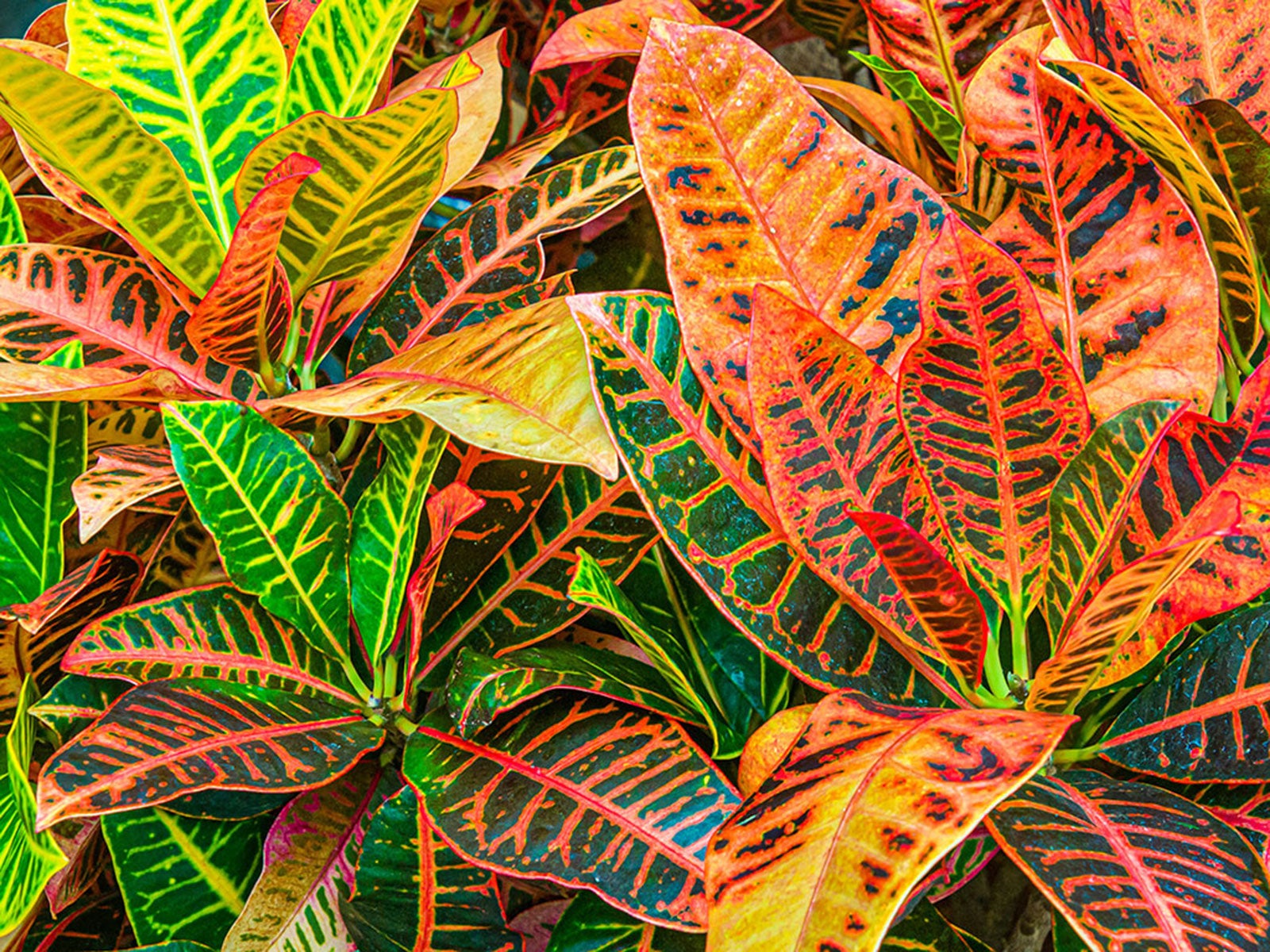

Mary Ellen Ellis
Quick Croton Facts
- Botanical name - Codiaeum variegatum
- Height - 2 to 6 feet (0.6 to 1.8m)
- Spread - 2 to 6 feet (0.6 to 1.8m)
- Sun exposure - Full sun to partial shade
- Soil requirements - Fertile, moist, well-drained
- Hardiness zones - 11 to 12
- When to plant - Any time indoors
The trick to growing crotons (Codiaeum variegatum) is to understand that they are tropical in nature. These multicolored plants with their variegated foliage make popular indoor plants, but they sometimes have a reputation for being fussy. Still, the basic care of houseplants like crotons is much easier once you understand where they come from and what they need to thrive.
Sometimes known as Joseph’s Coat, the croton originates in Southeast Asia, where it is grown as a woody shrub. In North America, a garden croton will be an annual in most places. This is because it is hardy only in zones 11 and 12. But don’t let that put you off keeping one. Figuring out how to care for a croton plant is all about picking the right spot and mastering the basics. Get this right, and they make a vibrant and resilient garden essential.
How to Care for Crotons
Croton plant care is much simpler when you appreciate that these plants don’t like to be moved. Part of the reason they have a reputation for being fussy is that croton leaves can drop off within days of the plant being brought into a new home or environment. This is because when they are moved, they can quickly go into shock, which results in leaf loss.
This isn’t something to worry about. It just means you should avoid moving the plant too much. Once you have found the best place for your croton, cultivation is simple if you can provide adequate humidity and light. Plant croton in containers if growing outdoors outside of its preferred hardiness zones and bring indoors for winter. Otherwise, you can enjoy it as a houseplant all year round, using the following croton care essentials.
Light
Croton does best with full sun and will need high light in cooler temperatures. In the hottest climates, it prefers some partial shade. When growing crotons, check the light needs of your specific variety. In general, the more variegated and colorful it is, the more light it will need.
Water
Caring for crotons means keeping soil consistently moist, especially during the hottest part of the year. The soil should drain well to prevent standing water around the roots. However, you only need to water crotons in containers when the top of the soil is dry to the touch. When the water flows out of the bottom of the container, you can stop.
Temperature
The best temperature range for growing crotons is between 60 and 85 degrees Fahrenheit (15 to 29°C). The plant should also be kept away from drafts and cold, as it cannot tolerate temperatures below 60°F (15°C). If this happens, the croton will lose leaves and possibly die.
Gardening tips, videos, info and more delivered right to your inbox!
Sign up for the Gardening Know How newsletter today and receive a free copy of our e-book "How to Grow Delicious Tomatoes".
Humidity
Knowing how to grow crotons well is all about remembering that it is a tropical plant at heart. Because of this, you should provide moderate to high humidity conditions. Placing it on a pebble tray or misting it regularly will help to keep it in peak condition.
Soil and Compost
Choose a high-quality potting soil or compost for growing crotons or amend existing soil with organic material. Crotons don’t like wet feet, so make sure the compost or soil is fertile, moist, and well drained.
Fertilizer
Use an all-purpose fertilizer on crotons once or twice during the growing season. You only need to apply it more frequently if growing outside where the soil isn’t fertile.
Problems, Pests and Diseases
The main problem is the croton dropping leaves when it is moved. Otherwise, you should find that diseases and pests are not often an issue when caring for crotons. Spider mites are the most likely pests, identified by a speckling on leaves. You might also see thrips, mealybugs or scales. Try an organic spray with neem oil or a diluted horticultural soap to tackle these infestations.
How to Plant Crotons
When growing crotons as houseplants, you can keep them in the container with which they arrived. That said, it’s a good idea to repot your houseplant every two to three years. Croton plants can become top-heavy, so choose a container that is heavy and large enough that it won’t tip as it grows. Use a rich, well-draining potting mix. Water the plant before putting it in the new container and water thoroughly once repotted.
If you decide to try growing crotons outdoors, make sure the soil drains well and that it goes into a location with bright sunlight. Add compost or other organic material to the soil before planting.
Pruning Your Crotons
You can cut back croton leaves regularly to manage its size and keep it looking full and healthy. Prune indoor crotons at any time of year, and outdoor plants in early spring. Trim back growing tips once in a while to encourage fullness and branching. You can make more significant cuts to shape a croton or to keep it small. They tolerate heavy pruning and will bounce back.
Propagate More Crotons
You can easily propagate croton plants to make more for the home and garden. Simply take a stem cutting with three to five leaves. Place the cut end in some potting mix and keep it moist. For quicker results, dip it in a rooting hormone first. Keep the cutting in a warm location, and you should have roots in around a month.
Growing Crotons In Winter
Croton plants are easy to overwinter – remember they can be grown year-round as houseplants. When overwintering tropical plants, you just have to bring them indoors. Do this with crotons before temperatures outside drop below 50°F (10 C). Give the plant a warm spot with bright light. Use a pebble tray or mister to ensure humidity levels around the plant are well maintained.
Best Croton Varieties for Houseplants
Growing crotons as houseplants presents a range of choices. You’ll find that different croton plants have leaves that are short, long, twisted, thin or thick. Popular Joseph’s Coat varieties have showy reds and oranges, but other crotons can be green, pink and even black. Here are some of the best cultivars:
- ‘Eleanor Roosevelt’ has long, narrow leaves with yellow spots that age to red.
- ‘Evening Embers’ has blue-black foliage that looks metallic, with red and green highlights.
- ‘Franklin Roosevelt’ is similar to ‘Eleanor Roosevelt’, but with orange and pink spots.
- ‘Oakleaf’ has leaves with lobing which (as the name suggests) resemble an oakleaf.
- ‘Petra’ is a common variety of croton with bold leaves of yellow, orange, pink, red, and green.
- ‘Thai String’ has very narrow leaves in red and green.
Are Crotons High Maintenance?
Although crotons have developed a reputation for being fussy, this is only because they require tropical-like conditions. Once you know how to care for a croton plant, they are easy to maintain. If you provide bright light, warmth and moisture, they are easy houseplants for beginners to grow.
Can a Croton Plant Get Too Much Sun?
Depending on the variety, crotons can be picky about what constitutes too much or too little light. If you see a croton losing its color and reverting to green, it could be because of inadequate light. It's harder to give a croton too much light, but colors on leaves might fade and look gray in excessive sun.

Heather Rhoades founded Gardening Know How in 2007. She holds degrees from Cleveland State University and Northern Kentucky University. She is an avid gardener with a passion for community, and is a recipient of the Master Gardeners of Ohio Lifetime Achievement Award.
- Mary Ellen EllisWriter
-
 Looking For Plants To Give You The Soft And Fuzzies? Try These 5 Fuzzy Leaf Plant Options
Looking For Plants To Give You The Soft And Fuzzies? Try These 5 Fuzzy Leaf Plant OptionsLovers of texture, drama, silver foliage and tactile plants will adore these special sensory garden additions. These fuzzy leaf plant options will leave you all aglow
By Susan Albert
-
 Get Ready For A Summer Of Hummers! Grow These Full Sun Hummingbird Plants and Flowers
Get Ready For A Summer Of Hummers! Grow These Full Sun Hummingbird Plants and FlowersIf you’re lucky enough to enjoy a sunny backyard, make sure you are maxing out on your pollinator opportunities and grow these full sun hummingbird plants and flowers
By Tonya Barnett
-
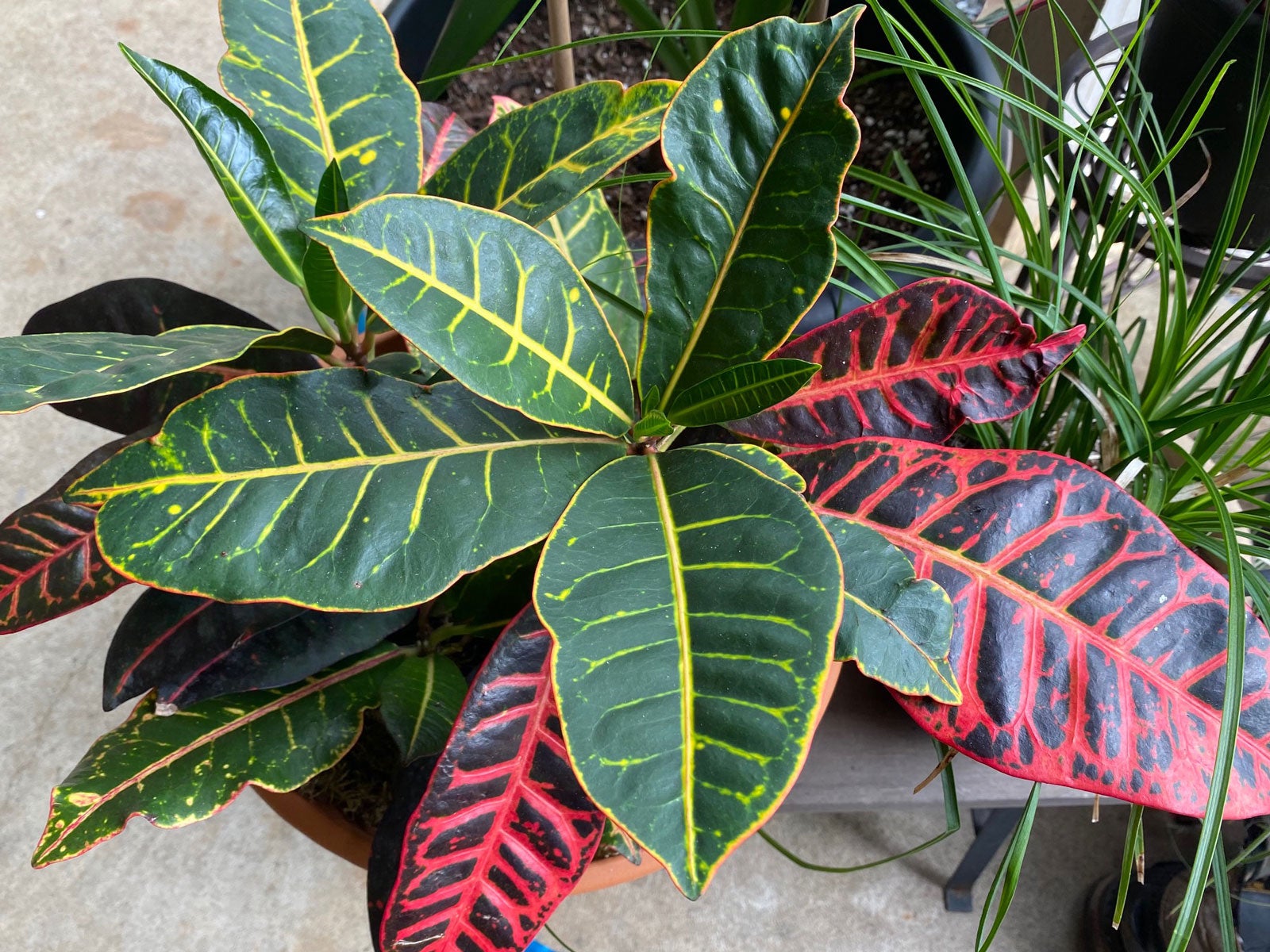 Different Croton Plants: Types Of Croton Houseplants
Different Croton Plants: Types Of Croton HouseplantsWhen it comes to different croton plants, the selection of varieties is nearly endless and none are boring. Click to learn more.
By Mary H. Dyer
-
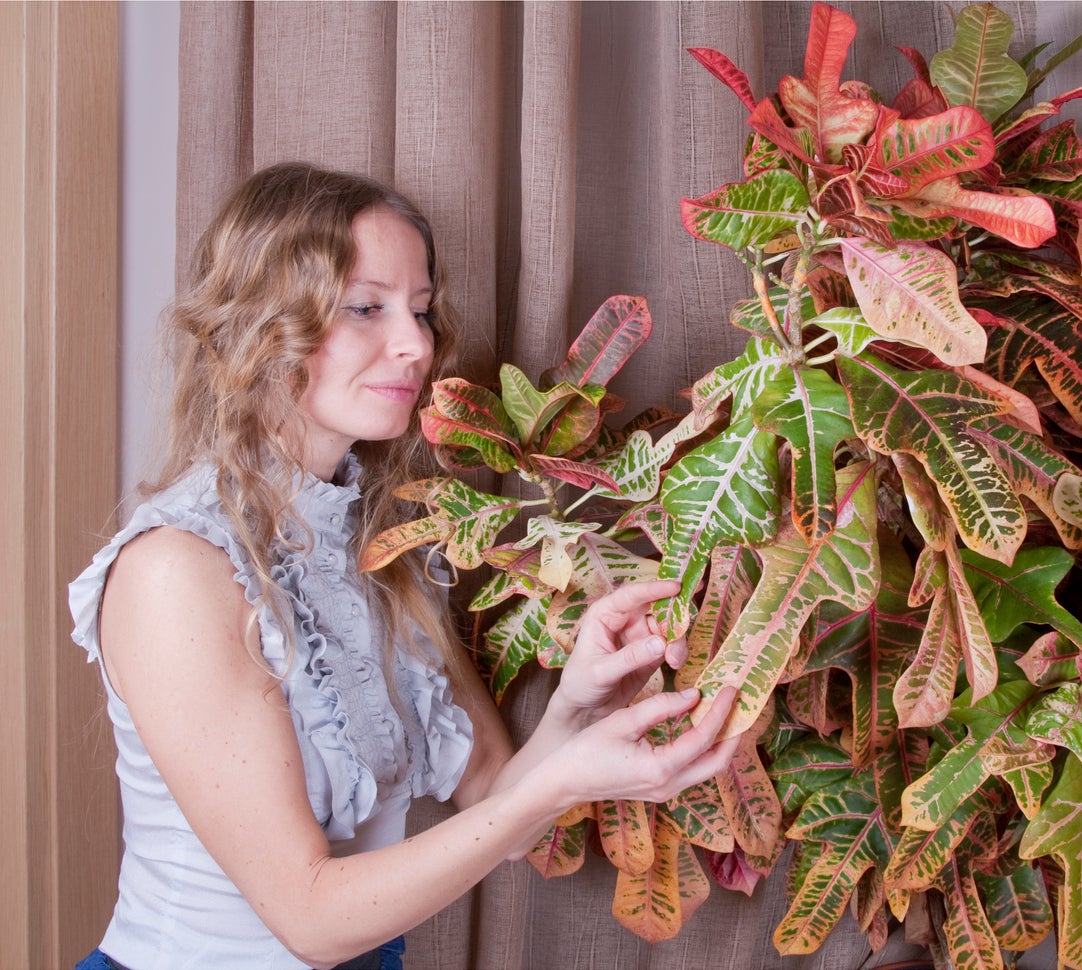 Cutting Back Croton Leaves: Should You Prune Crotons
Cutting Back Croton Leaves: Should You Prune CrotonsCrotons can grow quite leggy, and leaves may develop damage due to thrip feeding. Cutting back a croton can help you acquire a thicker bush or remove ugly leaves. Whatever the purpose, a few tips on croton pruning from this article will help.
By Bonnie L. Grant
-
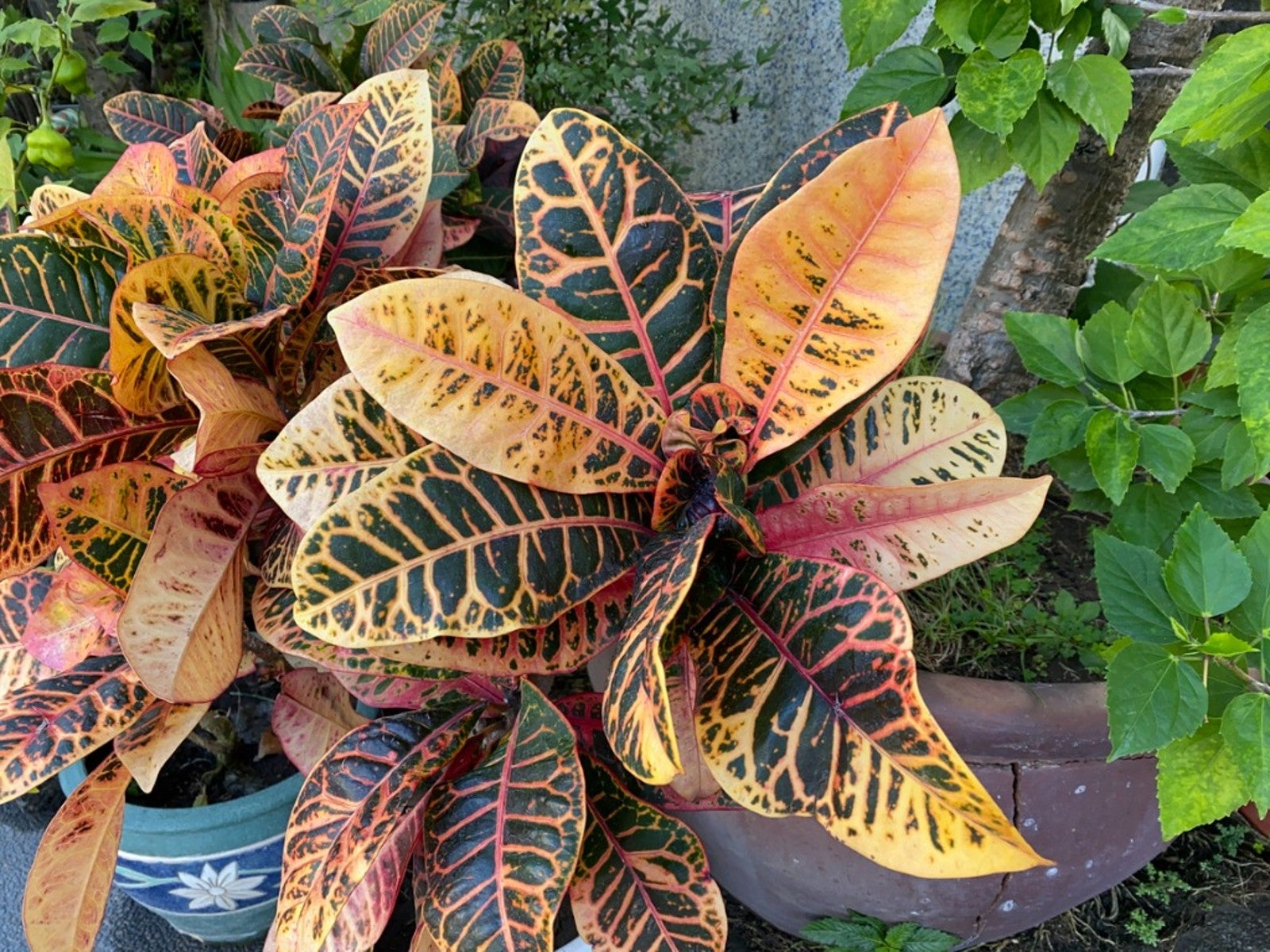 Croton Leaves Are Fading – Why Is My Croton Losing Its Color
Croton Leaves Are Fading – Why Is My Croton Losing Its ColorWho doesn?t love the bright colors of croton plants? But sometimes the bright colors on a croton fade, leaving them with ordinary looking green leaves. It can be disappointing to notice a croton losing color. Learn how to remedy this in the article that follows.
By Ilana Goldowitz Jimenez
-
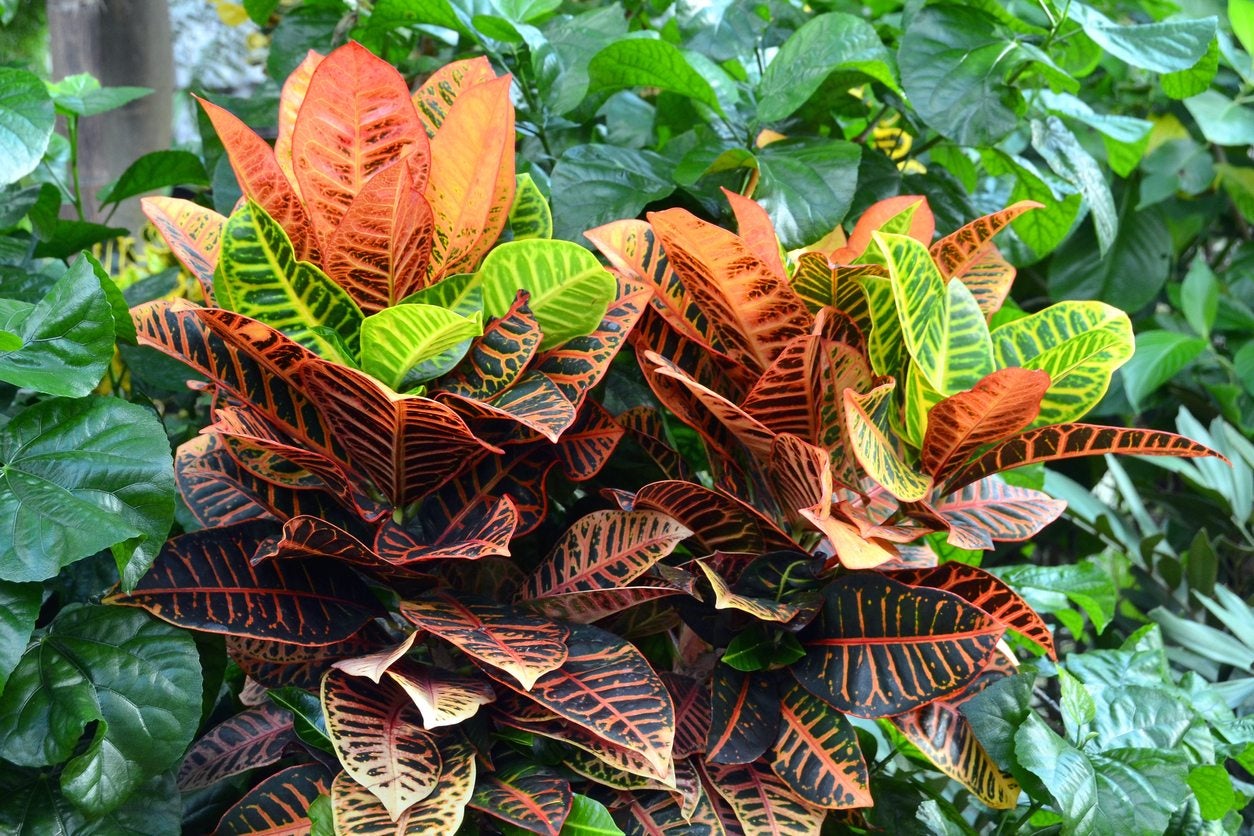 Care Of Outdoor Croton Plants: How To Grow A Croton Outdoors
Care Of Outdoor Croton Plants: How To Grow A Croton OutdoorsHardy to zones 9 to 11, most of us on grow croton as a houseplant. However, croton in the garden can be enjoyed during the summer and sometimes into the early fall. You just need to learn some rules about how to grow a croton outdoors. This article will help.
By Bonnie L. Grant
-
 Croton Leaf Drop – Why Is My Croton Dropping Leaves
Croton Leaf Drop – Why Is My Croton Dropping LeavesYour brilliant indoor croton plant is dropping leaves like crazy. Don't panic. Leaf drop on croton plants can be expected any time the plant is stressed. You just need to know how to give croton what it needs to thrive. Click here to learn more.
By Gardening Know How